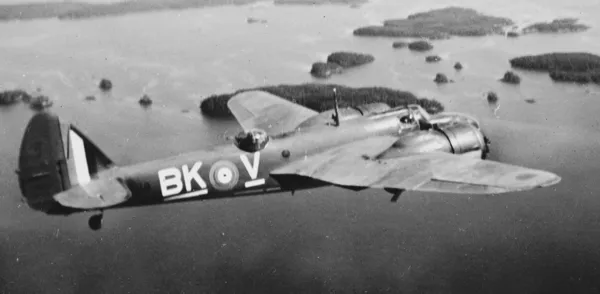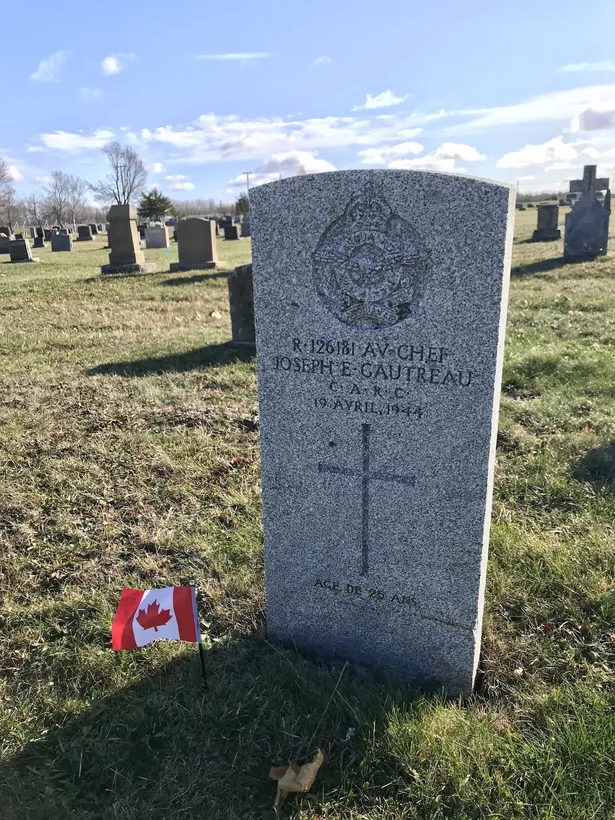McDonald, Duncan Joseph
Killed in Action 1944-04-19


Birth Date: 1918-June-14
Born:
Son of Osborne and Catherine Ann McDonald, of Mulgrave.
Home: Mulgrave, Nova Scotia
Enlistment:
Enlistment Date: Unknown
Service
RCAF
Unit
121 Sqn- Squadron
Base
Rank
Leading Aircraftman
Position
Leading Aircraftman
Service Numbers
R/174633
First Burial
 St Lawrence Cemetery At Mulgrave, Nova Scotia
St Lawrence Cemetery At Mulgrave, Nova Scotia
This incident involved multiple aircraft:
- Bolingbroke Mk. IVT Serial: 9180
All the above aircraft in the above list are referenced in this report.
Bolingbroke 9180
Bristol Bolingbroke

Fairchild Bolingbroke Mk. IV, RCAF (Serial No. 9118), coded BK-V, No. 115 (Bomber Reconnaissance) Squadron, Patricia Bay, British Columbia, 1942.
The Bristol Fairchild Bolingbroke was a maritime patrol aircraft and trainer used by the Royal Canadian Air Force during the Second World War. Built by Fairchild-Canada, it was a license-built version of the Bristol Blenheim Mk IV bomber.
In 1935, the British Air Ministry issued Specification G.24/35 to procure a coastal reconnaissance/light bomber to replace the Avro Anson. Bristol proposed the Type 149, based on its Blenheim Mk I, with Bristol Aquila engines to give greater range. While the Air Ministry rejected this proposal, a Blenheim Mk I, retaining its Mercury VIII engines, was converted as a Type 149 (Blenheim Mk III) for the general reconnaissance role.The nose was lengthened to provide more room for the bombardier, with the upper left surface of the nose being scooped out to maintain pilot visibility during takeoff and landing.
The longer range also fulfilled a Canadian requirement for a maritime patrol aircraft. Consequently, Fairchild Aircraft Ltd. (Canada) of Quebec started production of the Blenheim Mk IV as the Bolingbroke (the originally intended name for the Blenheim IV). This type was nicknamed the "Bolly". After a small run of aircraft constructed to British specifications, as the Bolingbroke Mk I, Fairchild switched production to the Bolingbroke Mk IV with Canadian and American instruments and equipment. These versions also included anti-icing boots and a dinghy. One of the early Mk IV variants was the Bolingbroke Mk IVW which was powered by two 825 hp (615 kW) Pratt & Whitney SB4G Twin Wasp Junior engines. Incapable of maintaining altitude on one engine, the normal bomb load was reduced to 500 pounds on these aircraft to compensate for the low engine power. The most-produced variant was the Bolingbroke Mk IVT trainer, of which 457 were completed. A total of 626 Bolingbrokes were produced.Wikipedia
Bolingbroke 9180
Bolingbroke Mk. IVT 9180
Ordered as Mk. IV, order cancelled . Order re-instated 1942 as Mk. IVT. Taken on strength for Home War Establishment, noted as loaned to Central Training Establishment from 28 October 1943. With the Test and Development Establishment at RCAF Station Rockcliffe, Ontario, dates unknown. Category A crash in Nova Scotia on 19 April 1944 while assigned to 121 (C) Sqn. The a/c crashed into the sea from a spiral dive, precise cause unknown but probably due to fumes overcoming pilot. The crew including, Pilot Officer H. Swinden, Leading Aircraftman D. McDonald, and Leading Aircraftman J. Gautreau, were all killed To No. 4 Repair Depot for salvage on 20 April 1944.1943-10-28 Taken on Strength Eastern Air Command 2019-08-20
1944-March-22 Accident: 1 Operational Training Unit Loc: Taxi Strip Names: Newell
1944-April-19 Accident: 121 Squadron Loc: 63° 22' West 44° 38' N Names: Gautreau | Mcdonald | Swinden
1944-06-07 Struck off Strength 2019-08-20
 Canadian Virtual War Memorial
Canadian Virtual War Memorial Commonwealth War Graves Commission
Commonwealth War Graves Commission www.findagrave.com
www.findagrave.com

 Wikipedia Bolingbroke Bomber
Wikipedia Bolingbroke Bomber Harold A Skaarup Web Page
Harold A Skaarup Web Page Bolingbroke Bomber WWII
Bolingbroke Bomber WWII Bolingbroke - Kestrel Publications
Bolingbroke - Kestrel Publications